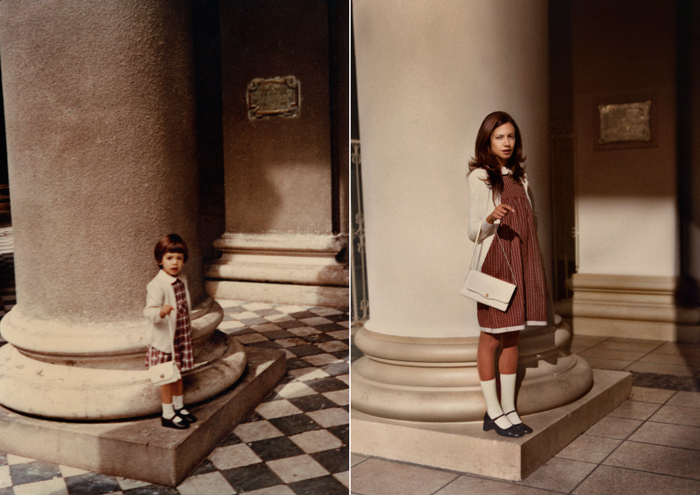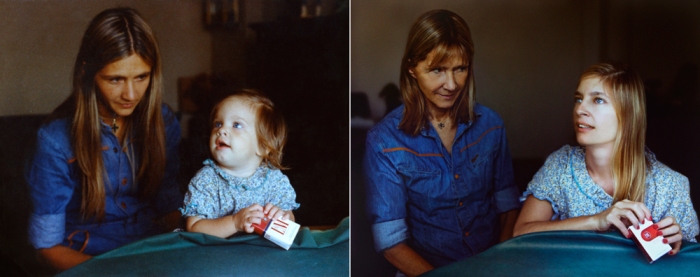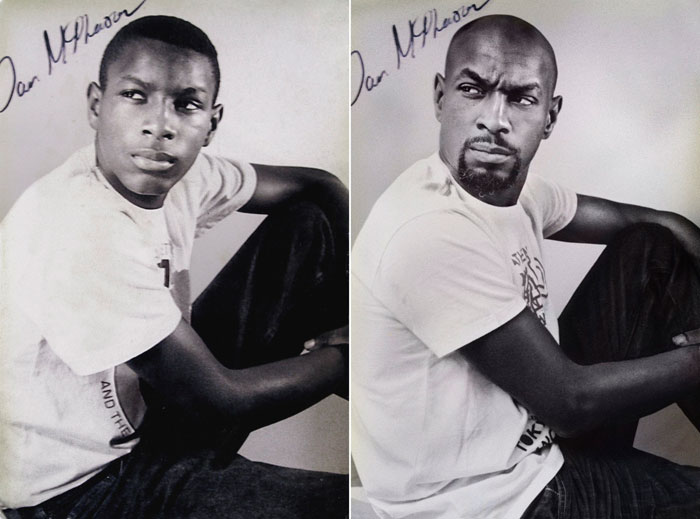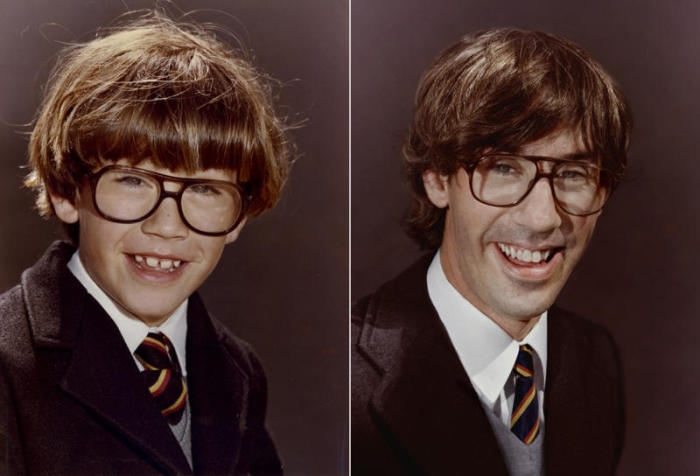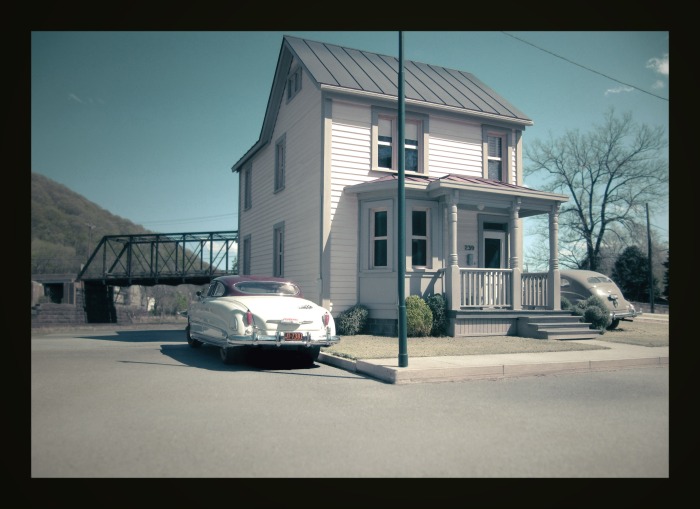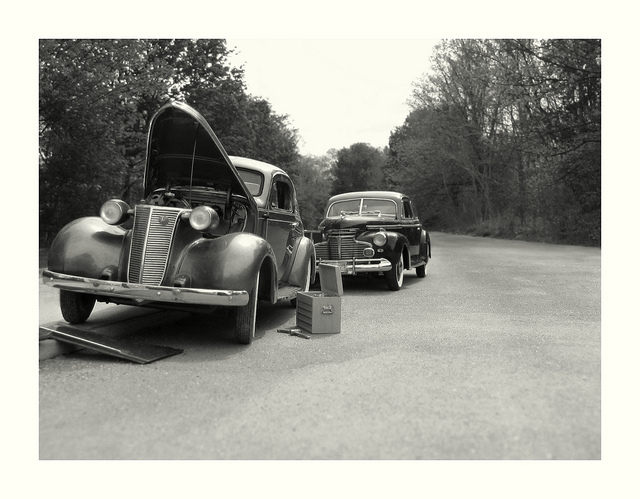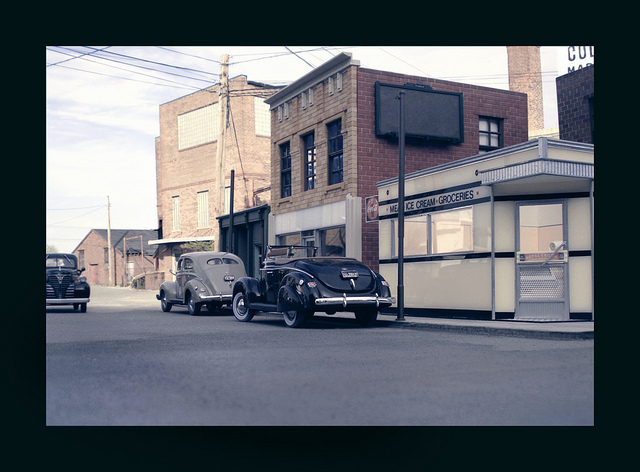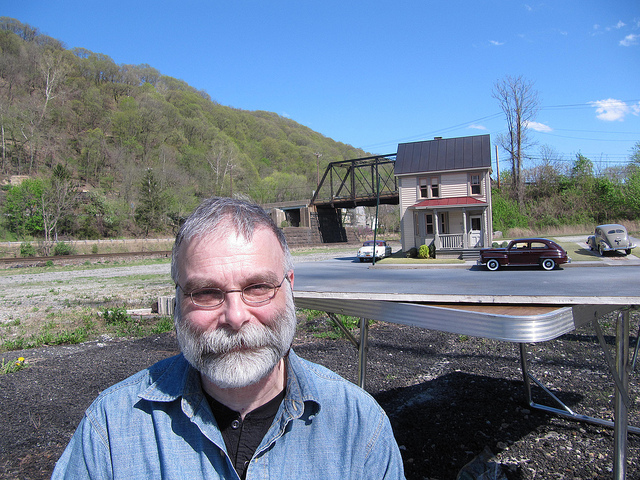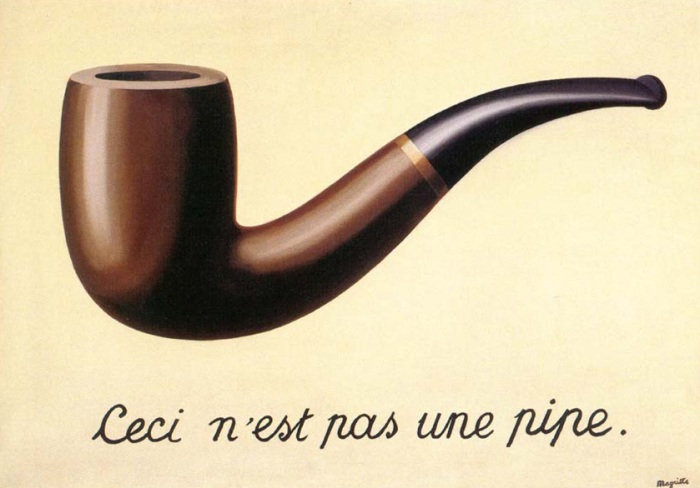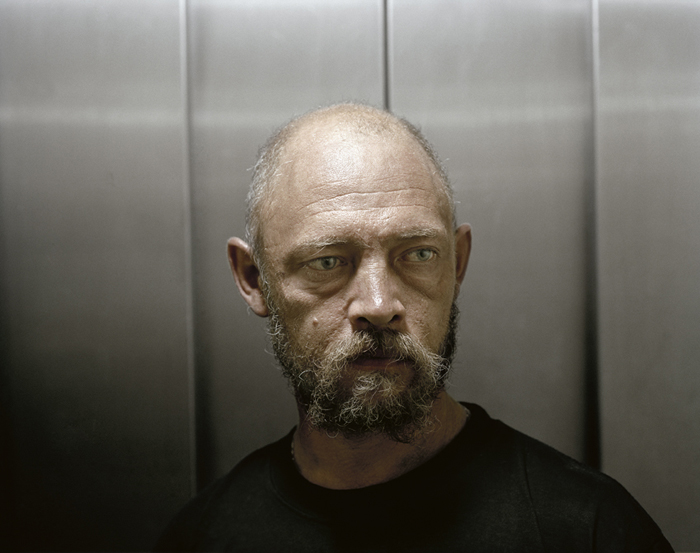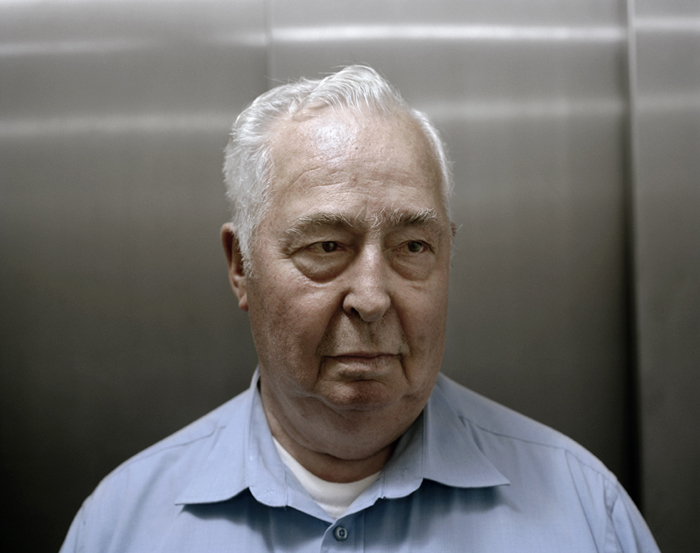Posts Tagged ‘representation’
Messing around with perspective: historical and otherwise.
Firstly my congratulations to Irina Werning for winning Burn’s emerging photographer award 2011. She is so cool. Here are some of her wonderful photographs from her series Back to the Future:
LALI IN 1978 & 2010, Buenos Aires [photograph by Irina Werning]
MARITA & COTY IN 1977 & 2010, Bueno [photograph by Irina Werning]
IAN IN 1984 & 2010, London [photograph by Irina Werning]
PANCHO IN 1983 & 2010, Buenos Aires [photograph by Irina Werning]
She is obviously very wicked.
There is another talented artist who also produces work which playfully deals with how the photograph can be used to visualise a sense of ‘history-ness’ and create nostalgia. His name is Michael Paul Smith*. Michael Paul Smith is a model maker whose mind is full of mid-20th century Americana. Using his considerable model making skills he has been creating small scale sets of an imaginary American town called Elgin Park that he cannot get out of his mind (it is reportedly located somewhere near Pittsburgh where he was born). After making the sets he then sources locations in the real-world which provide the background to photograph them against. These late naughties photographs of the 1960s look bloody REAL. Here are some examples of his work. Fantastic stuff:
My Childhood Home [photograph by Michael Paul Smith]
Newspaper photo: Corliss Dink’s ’37 Studebaker [photograph by Michael Paul Smith]
Edge of Town [photograph by Michael Paul Smith]
Michael Paul Smith with one of his sets and a background behind him
The NY Times wrote an article about him and there’s a paragraph that I think summarises the attempt of his work very nicely:
Driving Mr. Smith’s creation of Elgin Park were his memories of Sewickley, Pa., a real steel-mill town a few miles north of Pittsburgh. He spent his first 17 years there, and it still holds his heart. “Elgin Park is not an exact re-creation of Sewickley,” he explained, “but it does capture the mood of my memories.”
*My very talented illustrator friend Phoebe Dickerson told me about Michael Paul Smith. If you want some visual inspiration check out her very cool, and very funny, Tumblr blog.
The portrait of anonymity (post about Roderick Henderson’s work)
I came across the work of Roderik Henderson after my MA coursemate Simon Bates flagged his work up. I’ve been looking through his work and I just wanted to do a little post about some of his portraits because I think they are really great.
His series entitled Island is comprised of images which are taken of people from a community in Holland, and are set in the lifts that they use to go to and back from work. If you look at the images you’ll see that what he has produced is a series in which he has intentionally given the viewer almost no insight into who the people are, because of the location that he has decided to shoot his portraits in and because of the way that he has positioned his subjects in relation to the viewer. The cold, metallic surface of the lift is the perfect place to situate a series of portraits so scarce in personal information.
I just thought this was rather interesting given what I’ve been trying to do with the portraits on my current course assignment; I’ve chosen people with locations that will suggest something about them and what they do. But how much does this actually say about them as a person, besides the visually obvious? And when does this excercise become not worthwhile?
I thought Henderson’s intention was a provocative place to come, given my portrait assignment. It’s fascinating to see an artist who has worked so hard to make sure that what is visual does not actually give that ‘window into the soul’ that the portrait so often tries to convey.
Rappers, photo fraud, and a multimedia video what I made
When Melanin 9 dropped his High Fidelity mixtape I was about 20, so he must have been 20/21 at the time. He’s easily still one of my favourite rappers and if you haven’t had the experience of listening to his portrayal of a city’s moral subterranea or his views on gun crime I would advise you to check out his videos for Strange Fruit and Shot. Both are pretty hardcore, but the latter is the visual equivalent of being punched through the iris. I’ve included it below:
VIDEO FOR ‘SHOT’
It took me 3 years to send him the e-mail that would lead to us working together: I would eventually shoot an album cover, his family, freestyle sessions, and his slot supporting the Wu-Tang Clan’s Ghostface Killah, amongst other things. He’s also introduced me to a lot of 90’s boom bap hiphop (check out Heltah Skeltah, Black Moon, Smif-N-Wessun for more).
I also produced the below video, which I guess is essentially a comment on my approach to representing the whole project. More and more I find myself feeling uncomfortable with the pseudo-authority that the photograph can have over its subject; not only because they are too easily seen as the definitive way to view an event/person (although perhaps less so now) but also because of the ease in which they can be passively, unquestioningly, consumed relative to other more ‘difficult’ media, particularly text. A picture might be worth a thousand words, but it doesn’t mean that those words aren’t generalising.
None of this is new obviously. In fact Mr Roland Barthes summarised the paradox of the photograph as a piece of information in 1980 when he argued that the image, when generalising,
“completely de-realises the human world of conflicts and desires, under the cover of illustrating it.”
But how does one get away from generalising? Shall I read less? Should I research more? How do I escape this nebula honestly!?
I can say from experience that I don’t feel comfortable producing an authoritative portrait of anything, and this multimedia piece that I produced in collaboration with Melanin 9 is an attempt not only to get him to comment on the way he feels rappers are represented by themselves and the media (and me), but also to undermine the authoritative guise that any photo I’ve taken has decided to give itself; particularly when I’ve been photographing him outside his estate. Good or bad, I’d be interested to know what you think of it:
When I was young, I wanted to be a rapper actually…

Promo photo for my old rap group 'Dark Trade'. Yes I know, the name makes no sense
I’ve always been a fairly creative person, but I’ve certainly never wanted to be a photographer all my life. I didn’t even own a camera until 22 (25 now) and to be honest I really wasn’t interested even then, I always wanted to be a rapper anyway. I was quite serious about it: I went to open mic nights in London, I freestyled in the street ciphers with other London emcees, rapped about being much better than all of the other rappers, and all the rest of stuff that you would normally expect. I even recorded a 5 track EP ‘Something I Made Earlier’ which still lies on my hard drive, completely unreleased (however two of the tracks on there can be listened to on my old Myspace page. NB: be warned they are fairly cringe, but they’re still kinda funny to listen to now).
My point is is that although I didn’t start photography until much later than most people, I’ve always been trying things out, adapting to different practices, and seeing what works best for myself. I think this experience of trying different things out and being ready to adapt is really key to my practice as a photographer today, and will be even more important in the future. We just don’t know what’s coming next in terms of storytelling technology. Look at transmedia for example, I mean wow, that’s a real opportunity to explore.
But anyway, back to me. I started taking pictures after buying my first proper camera (a Canon point and shoot) in early 2008 to document my back packing travels in South America and the USA. Needless to say I really enjoyed it, and when I got back I wanted to find something that would keep me going and help me focus on one subject. I would never have predicted that I would literally stumble across a cage-fighting gym near where I live, but obviously I was rather transfixed and started my first project on the UK full contact fighting scene then and there (that was in late 2008 – it’s still ongoing now). I’ve now worked on two proper long term story projects, the latter I’ve just mentioned, and then there’s also one on the UK rap scene and the lives of the artists behind it such as Melanin 9, Chrome, and the members of Triple Darkness. I’m also trying to cover the actions of the anti cuts movement in the UK, which I’m finding quite difficult to do objectively, as I’m a supporter yet have been involved in taking pictures which don’t always tell the whole story about the protests that I’ve attended (obviously this is one of the occupational hazards for any reporter, and I will do my best to dedicate a blog post on it at a later date).

Police wait for more orders in the midst of the 'kettle' on Whitehall, during the protests against the rises in tuition fees, 24.11.10
In terms of my practice up until late last year, I’ve always been focusing on telling quite literal stories: ‘x’ is what happened, ‘y’ is a main character in this story, ‘y’ is related to ‘m’ and they are both heavily involved in ‘n’, which eventually led to ‘x’ happening. Stuff like that. Although that’s important to editorial photography, I would like to try methods of storytelling that aren’t quite so linear in the future and this is something that I’m hoping that I can get started on MAPJD course. Having the privilege of being lectured by such visual and conceptual greats as Peter Fraser is a brilliant way to start. The work of Taryn Simon and Sophie Calle is of influence here too. Due to these photographers I’m quite interested in making work which comments on why and how the photograph is used, particularly in a commercial news context, because I think that is a story that’s seriously worth telling. I’ve made my first baby steps in this area by producing and shooting a short 5 minute film with the rapper Melanin 9, which is a comment on how rappers are represented in media. You can see that here.
PS: My last thing to say is that I’m very lucky that the digital age came along. Digital is intrinsically sympathetic to anyone who doesn’t quite get how the camera works, and I am still embarrassed to say that she has been very sympathetic with me. Technically I am an awful photographer, and have nothing more than a rudimentary sense of how the camera works. Thankfully photojournalism isn’t all about one’s technical ability with the camera, but obviously it’s fundamental to being a professional. It’s safe to say that my technical knowledge of the camera is an area of my practice that I clearly need to attend to. I need to be able to understand all of the possibilities available to be when I hold the camera in my hand, and that’s certainly something I also want to be forced to teach myself on the LCC MA course.
But that’s enough for now. More on me and what I do later….
